The Trevor Baylis story
Contributing Editor
If you’ve heard of Trevor Baylis story, then you may know him as the founder of Trevor Baylis Brands, the OBE award winner, and the inventor of wind-up radio.
However, did you know that Baylis was also almost an Olympic swimmer, an aquatic stunt performer, and an escape artist, too?
One of the most diverse and inspiring inventors of our time, Trevor Baylis, lived an incredibly varied life. His innovations in tools designed to empower people with disabilities, the invention of the wind-up radio, and more should have made Baylis a household name.
By the time he died (in March 2018), Baylis was penniless and struggling to earn recognition for his hard work. Like many pioneers, Trevor Baylis was woefully underappreciated during his lifetime.
He transformed the lives of thousands of people over the years, giving people with disabilities their independence and ensuring the spread of education in Africa and other developing countries.
Here’s the complete story of Trevor Baylis, OBE.
Introducing Trevor Baylis
The ethical innovator
Trevor Baylis is a true gem of British history. Best known for the Trevor Baylis wind-up radio, his story is about more than just clockwork mechanisms.
Baylis was born in 1937 in London and got his education at a Middlesex primary school. He went on to study engineering at a technical college during the day while working at a soil mechanics laboratory in the evenings.
In fact, throughout his life, Baylis held a wide variety of jobs and pursued a multitude of interests. In his early days, Baylis was an avid swimmer and swam for the Great Britain team. However, he failed to make it into the 1956 Olympics by a tiny margin.
In interviews, Baylis explained how he learned to swim in a canal during the war, eventually joining a swimming pool company in Middlesex.
After he completed his national service as a physical training instructor for the army, he left the armed forces in 1961. He then took on a job as a salesman at a company called Purely Pools.
During his time with the pool company, Baylis’s life took an interesting turn. He suggested that he might be able to increase the organization’s sales if he demonstrated their pools by diving into them.
To gather crowds, Baylis performed increasingly complicated feats, including underwater escapes. Eventually, he was approached by a stunt company, who asked him to become a professional swimmer and stuntman.
As a bit of a show-off, Baylis thrived in the stuntman scene and even made appearances in the Berlin circus. The money he raised from his work eventually gave him enough to start his own business, named Shotline Steel Swimming Pools.
Baylis’s time as a stuntman opened his eyes to the special demands of the physically disabled. Many of his friends in the industry ended up permanently injured from their death-defying feats.
This encouraged Baylis to begin working on a range of inventions which he called “Orange Aids,” designed to give independence back to those with injuries.
By the time he died, Baylis was responsible for more than 250 different products, many of which were dedicated to the disabled community.
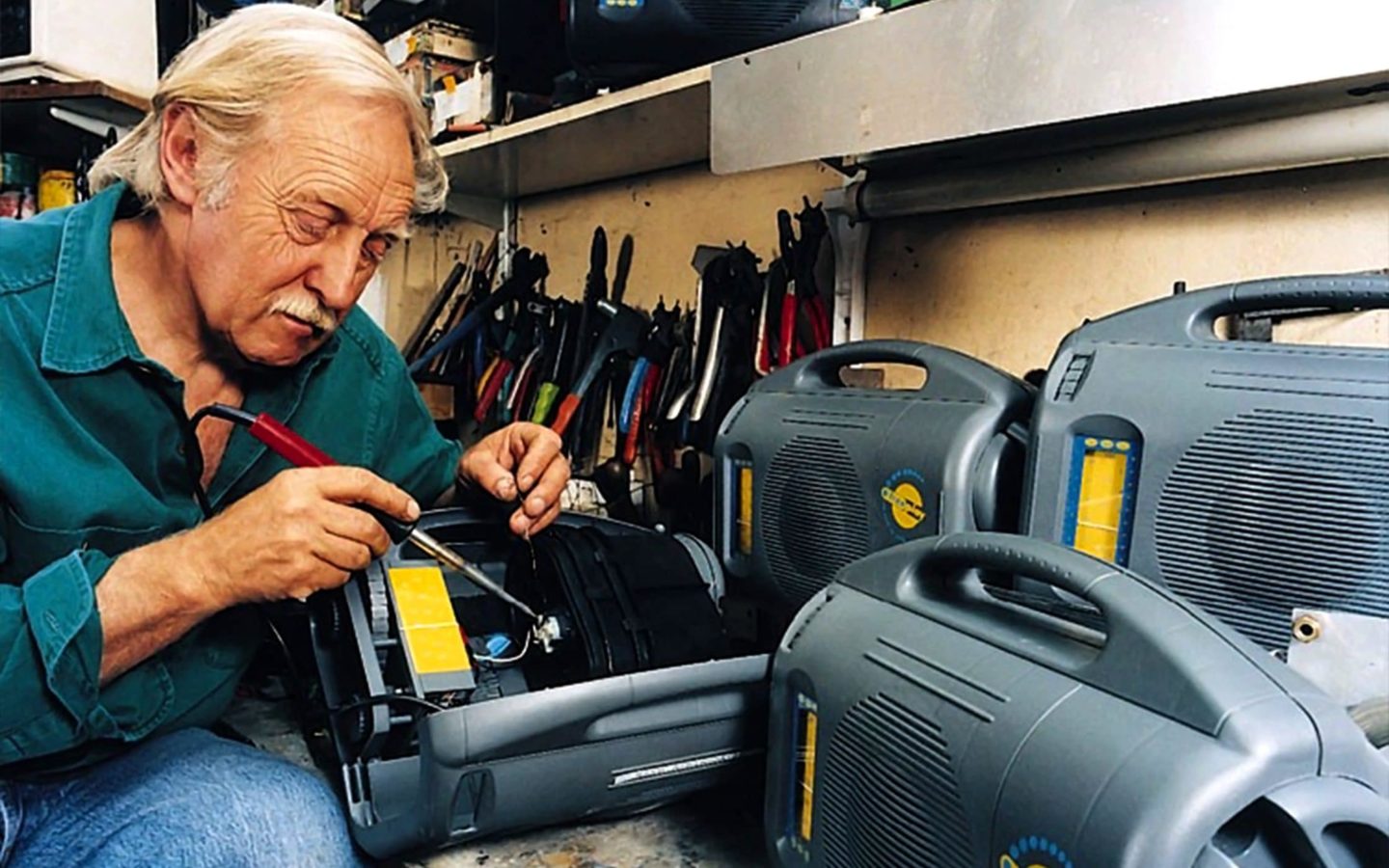
Trevor Baylis inventions
What else did Baylis build?
So, what did Trevor Baylis invent? The list goes much further than the wind-up radio. Throughout his lifetime, Baylis was inspired to create a multitude of incredible products.
For instance, when he was in the Berlin circus, he fell in love with an aerial ballet star from Vienna. During one of her performances, the actress broke her neck and died.
Broken-hearted, Baylis took what he learned that day and combined it with his knowledge of disability from other friends who had ended up injured in the stunt circuit.
He said that “disability is only a banana skin away” and began working on a range of products that would support people, regardless of what happened to their bodies.
Over the years, more than 200 “Orange Aid” products have appeared, including scissors you can operate with your feet, one-handed tin openers, and more.
Though initially, his Orange Aids were an amazing success, the venture eventually failed as companies re-designed the products and applied for their own patent, leaving Baylis with nothing.
Despite this, Trevor still said that his range of disability products were one of his proudest achievements.
Aside from the Orange Aids, one of the most famous Trevor Baylis inventions has to be the clockwork radio. Baylis was inspired to create his clockwork radio when watching a documentary about AIDS in Africa.
He discovered that one of the reasons for the spread of the disease was a lack of health education in developing countries.
The Trevor Baylis wind-up radio won him the 1996 BBC Design Award for best design and product.
The BayGen Freeplay Radio is still considered to be one of the most iconic pieces in British design, and features in the UK Science Museum collection.
Shortly after designing the wind-up radio, Baylis met the Queen, Nelson Mandela, and other big names. He also ended up on the Big Breakfast show, demonstrating his new inventions.
Unfortunately, like other Trevor Baylis inventions, the wind-up radio failed to earn him any sustainable acclaim. The company manufacturing his devices made minor changes to the design and applied for a separate patent.
This meant that they could take control of the product, force Baylis out, and leave him with nothing. Unwilling to stop innovating, Baylis went on to create various follow-up devices, including a wind-up torch and mobile phone charger.
Other inventions included the Baylis electric shoes, which he demonstrated during a 100-mile walk across the Namib desert for charity.
By the time of his death, Baylis had more than 250 inventions under his name, yet he struggled to earn much profit from any of them.
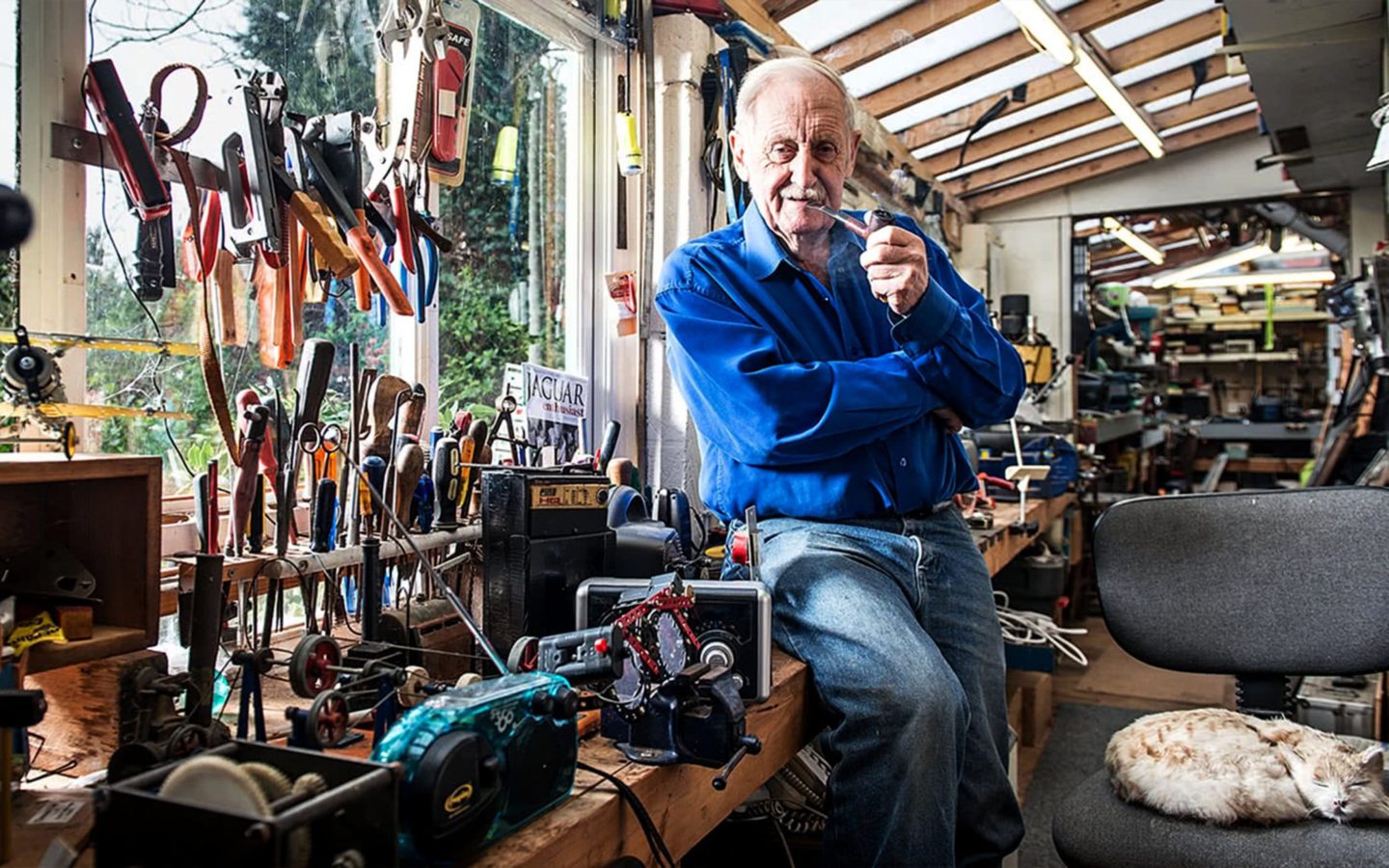
The wind-up radio
Why did Trevor Baylis invent it?
Baylis is best known for his invention of the clockwork radio. But why did Trevor Baylis invent the wind-up radio in the first place?
According to stories from interviews and Baylis’s own biography, he was inspired by a documentary on the BBC about the spread of AIDS in Africa. The reporter explained that education would be an excellent way to help deter the continuation of the virus.
However, many people in developing countries had no access to education because they couldn’t communicate with each other.
African communities lived without electricity and couldn’t afford the batteries required for a standard radio.
Baylis had his “eureka” moment when looking for a way to share radio transmission without access to conventional power.
He assumed that the technology used in his grandmother’s wind-up gramophone could also be adapted into a wind-up radio.
By the time the TV show had ended, the Trevor Baylis wind-up radio was on its way to an initial prototype. A few months later, he produced a version of his idea that proved his principle worked.
Of course, like any inventor, Baylis had a struggle ahead of him.
After all, you can’t just come up with an idea and expect it to take the world by storm. You also need to find backing for the thing you create. Initially, the idea was rejected by several large corporations.
It wasn’t until Baylis was almost on the verge of giving up that he got the opportunity to show his radio on the show “Tomorrow’s World.”
In 1994, the Trevor Baylis radio received backing and began to generate global interest. However, there were still some issues to iron out in the design.
By 1995, the BayGen Power company produced the first official “Freeplay” radio, employing disabled workers in South Africa to create the products.
Since that time, the design of the modern wind-up radio has been re-designed several times. There are even solar-powered machines available now that can work without wind-up assistance.
Millions of Baylis’s radios were sold and donated around the world, resulting in numerous awards for Baylis, including an OBE for services to Africa.
Baylis also had:
- A World Vision Award for Development initiative.
- Eleven honorary degrees from UK universities.
- A Presidential Gold Medal from the Institute of Mechanical Engineering.
Baylis also ended up with his own “Inventor’s” slot for the Big Breakfast show on Channel 4.
Although the Trevor Baylis inventions that came after the wind-up radio didn’t earn the same acclaim as his wind-up radios, he continued to develop exciting new ideas for several years, often building on his theory for wind-up technology.
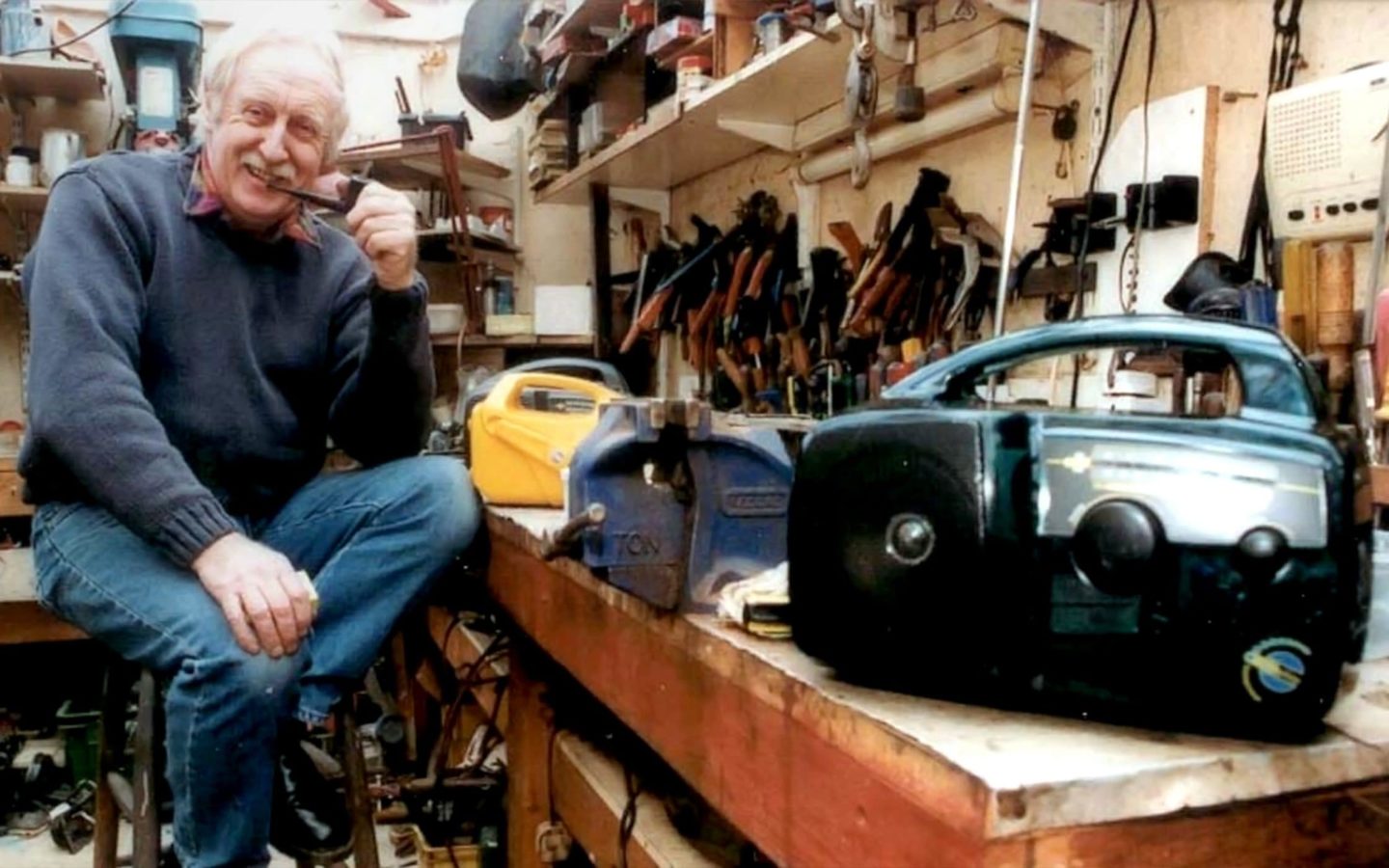
How the Trevor Baylis radio changed the world
Trevor Baylis’s inventions never made him particularly rich. However, they did change the world as we know it today.
Initial inventions like the Orange Aids gave the world an insight into the things we could do to make life easier for people with disabilities.
At the same time, the Trevor Baylis radio introduced manufacturers to the possibilities of using design to respond to environmental and social problems.
Baylis’s original wind-up radio wasn’t just useful because it offered a different way for people to power their must-have devices. The radio was also designed to be very durable and easy to repair.
This meant that it could last as long as possible for the people who needed it most. According to a study conducted in 1998, though the Baylis radio was chunky and heavy, it also had a lower overall environmental impact than any other radio available at the time.
Trevor Baylis is one of the original pioneers of sustainable design. As an avid inventor, he was continually looking for solutions to problems, and he helped us to address an issue that’s still relevant today – protecting the planet.
The Trevor Baylis wind-up radio inspired countless manufacturers and other brands to come up with similar versions of their own clockwork tools. Unfortunately, that fact didn’t help Baylis to make any money.
He explained in an interview with the newspapers of the time that he earned more money from the publicity around the inventions than the designs themselves.
Though the wind-up radio didn’t change Baylis’ fortunes, it did make a huge difference to agencies like the “Ears to Our World” initiative, which sent radios to third-world countries.
This group is still deploying hand-crank radios to some of the most in-need countries around the world. Although new options like solar-charging radios are available, they also require additional preparation time.
For instance, you need to keep your radio in the sun to let it charge. However, crank or clockwork radios are available to use at any time.
He may not have made a fortune, but Baylis had a profound impact from a humanitarian point of view. Trevor made the hand-crank radio more accessible and affordable.
He also introduced a strategy that made the decisions of previous radios more portable without compromising durability. His work had an impact on virtually everyone he met, including the Queen, Tom Hanks, and Nelson Mandela.
Over the years, many people have criticized the design of the Trevor Baylis radio, claiming that it’s too large, robust, or heavy. However, Trevor was looking for something that could survive the complicated environmental conditions in developing nations in Africa.
Baylis introduced companies to the importance of knowing how to balance social, environmental, and ethical decisions in their design choices.
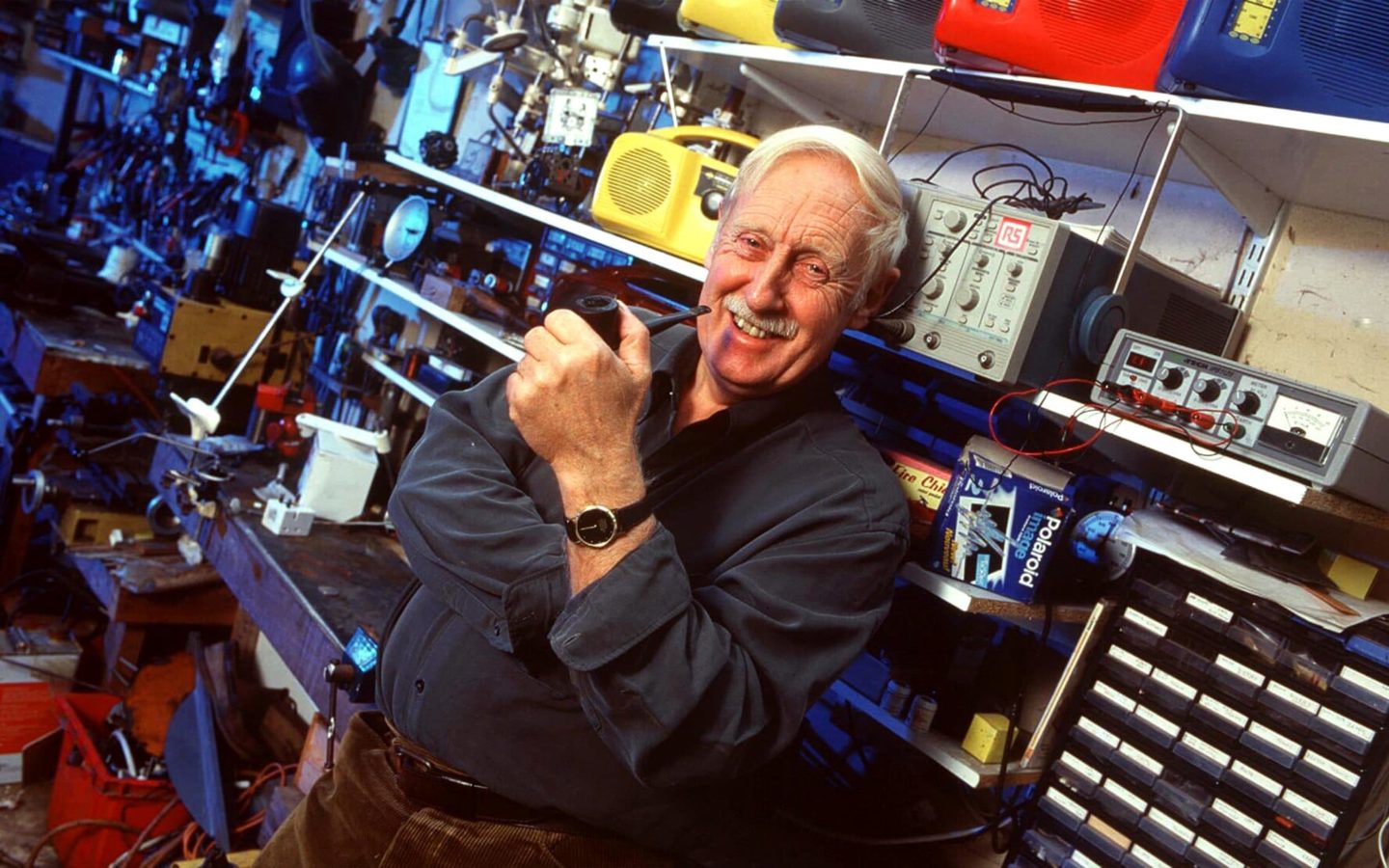
The rise of Trevor Baylis Brands
The wide variety of Trevor Baylis inventions that appeared over the years isn’t the only thing this inventor used to change the world.
Baylis’s experiences as an inventor and innovator also introduced him to a problem in the marketplace. He noticed that inventors rarely get the support or respect they deserve when they come up with something incredible.
Often, when the money started rolling in for his inventions, Baylis was pushed out of the company by organizations that had the resources and power to simply work around his existing patents.
Baylis claimed that the UK was “appalling” at looking after inventors. To help the next generation of people lead the way for exciting new ideas, he founded the Trevor Baylis Brands organization.
The group was dedicated to helping inventors protect their ideas in the modern age.
Although Baylis claimed that he wasn’t entirely motivated by money, he was upset at the way that certain unscrupulous and unethical companies profited from their inventors, often by breaching intellectual property laws.
The issue pushed him into a battle for greater protection over original ideas. He wanted inventors to make sure that their work was protected so that they could regain control over the things that they designed.
The Trevor Baylis Brands organization was founded in 2003 to connect new inventors with information and patent lawyers. In 2006, he explained his grievances to the World Intellectual Property Organization in greater detail.
In this interview, Baylis noted that there are countless predators on the market today, ready to steal other people’s hard work.
Baylis also said there was a general lack of support for the greatest inventors in the UK market. This, he felt, was particularly evident when ideas were lifted and re-packaged in an international marketplace.
He claimed that today’s inventors don’t always know when their ideas have been taken and moved into a far-away country.
Additionally, Baylis also felt that most small inventors didn’t have the resources they needed to fight for their intellectual property against big national corporations.
According to Trevor Baylis Brands and its inspirational founder, national economies are dependent on the innovations and inventions of their creative people.
This means that the government should always be willing to step in and support people who are at risk of losing their hard work.
Although Baylis was still fighting his battle to protect future patents when he died, there are some signs that things may gradually be changing.
Research shows that record numbers of smaller business owners are taking their intellectual property disputes into the courtroom.
In 2017, 367 cases were heard at the Intellectual Property Enterprise Court. This represents a significant increase of 28% over the last five years.
Additionally, people are beginning to feel more positive about the idea of life as an entrepreneur or inventor.
Studies show that one in three schoolchildren now dream of becoming an entrepreneur and owning their own business when they get older.
Although Baylis might have struggled to gain from his inventions for most of his life, his work is helping to ensure that people like him don’t face the same challenges.
Baylis’s work as an activist encouraged creatives around the world to take the plunge and bring their inventions to life.
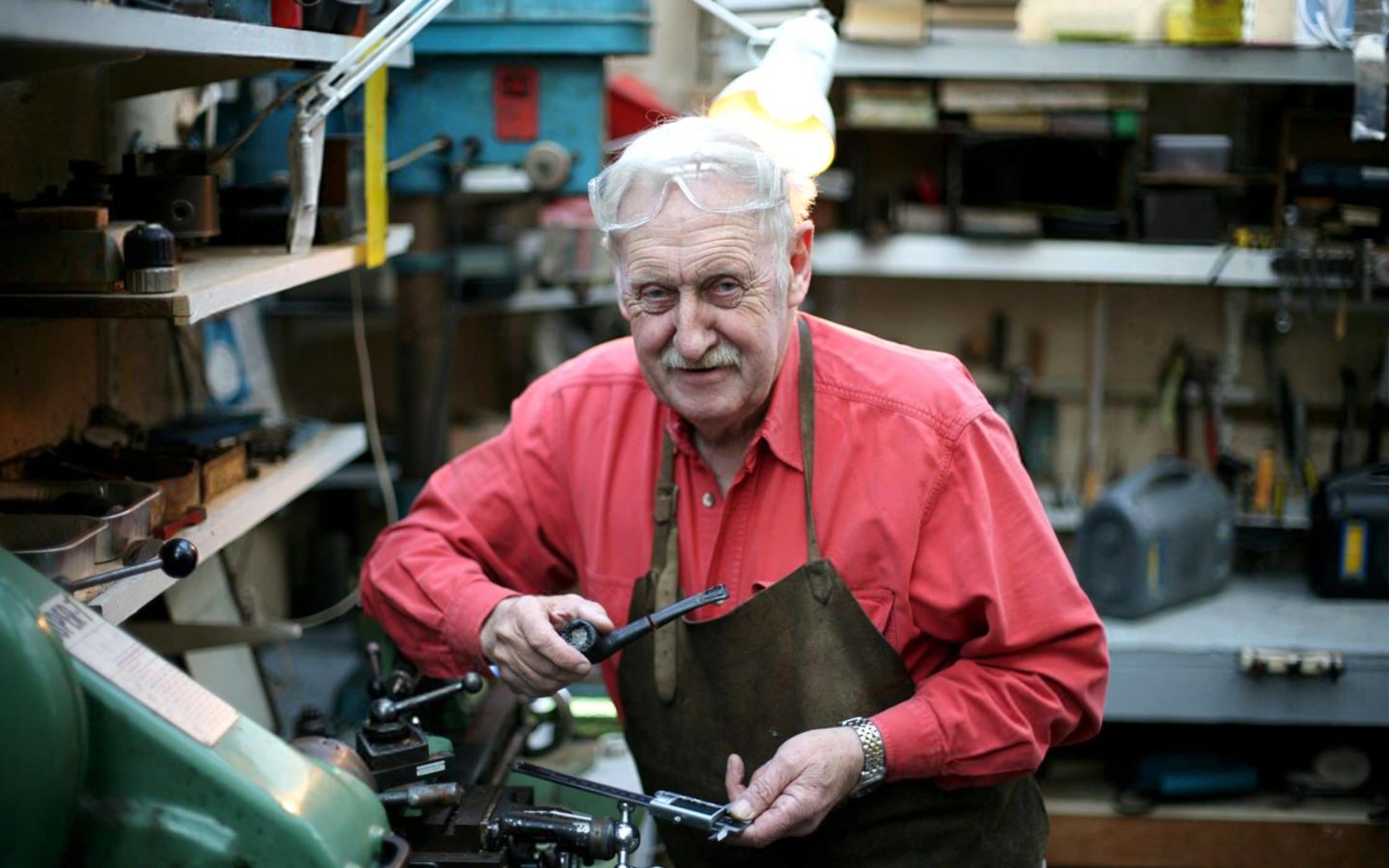
What happened to Trevor Baylis, OBE?
Trevor Baylis lived an incredible life.
Over the years, he was a stuntman, a military personal trainer, a salesman, and even an incredible swimmer. However, Baylis was always known for his best products and amazing inventions.
The wind-up radio that Baylis designed helped to save countless lives in developing countries by improving the spread of information. The tools, although slightly different in design, are still used by numerous charities today.
At the same time, the wind-up radio wasn’t Baylis’s only achievement. He also empowered countless people with disabilities, thanks to hundreds of Orange Aid devices.
Unfortunately, despite all of his accomplishments, Baylis died somewhat penniless. He was forced to turn to the speaking circuit to make money and struggled in a constant battle to protect his patents.
In 2015, Baylis was given some recognition for his efforts to improve patent law when he received the OBE for his attempt to make intellectual property theft into a criminal offense. He claimed that talking to the Queen at the event was like catching up with an “old mate.”
Despite his wacky behaviors and eccentricity, Baylis was always committed to making the world a better place.
He believed in helping people, whether it was the disabled friends that he met during his time as a stuntman or the impoverished people living in communities without access to electricity and battery power.
Baylis did so much more than just invent the wind-up radio. He also opened the door for people to start thinking differently about inventions and entrepreneurship. Baylis believed that everyone can become an inventor if they’re willing to invest in their ideas.
Through his battles with the patent office, his ongoing inventions, and his countless speaker sessions, Baylis inspired thousands.
He may not be a household name like Nikola Tesla, but he’s still one of the most influential and greatest inventors in the history of radio and the history of the UK.
For similarly inspiring tales from other inventions, you can also read the story of Guglielmo Marconi: Celebrating The Father Of Radio.
Radio Fidelity: For the love of radio.







